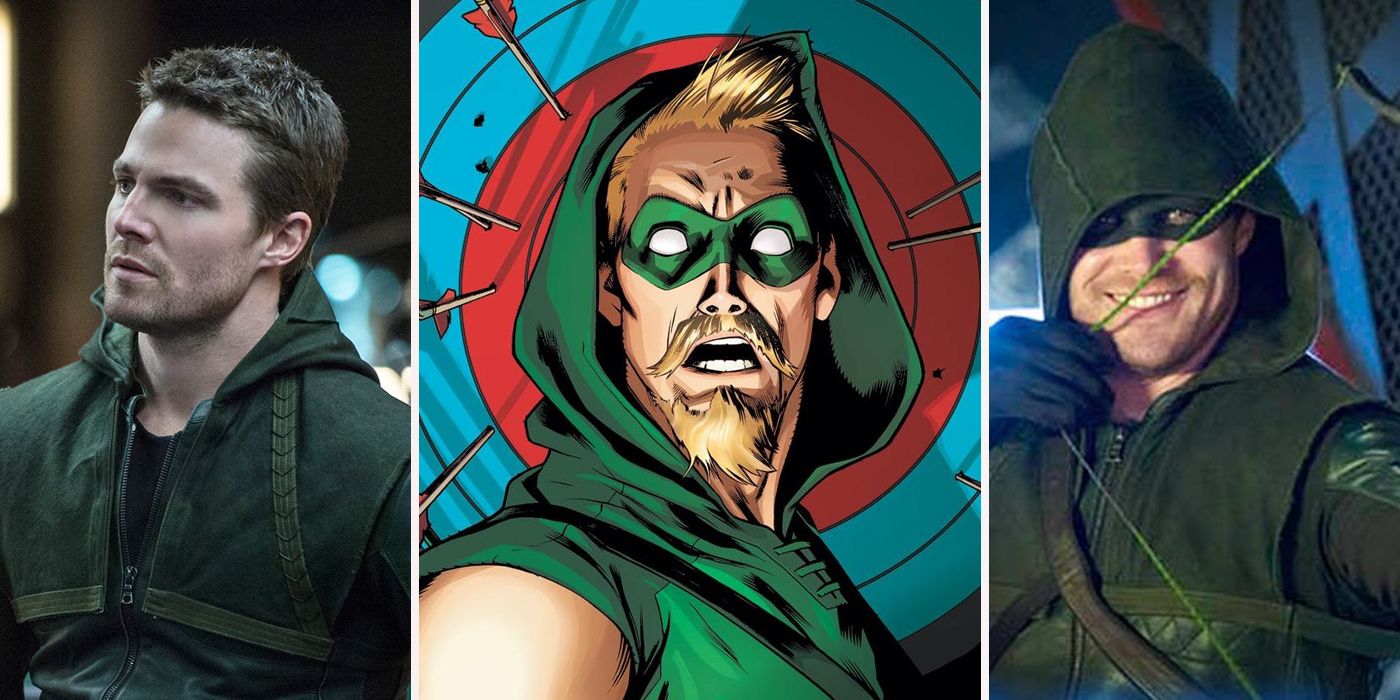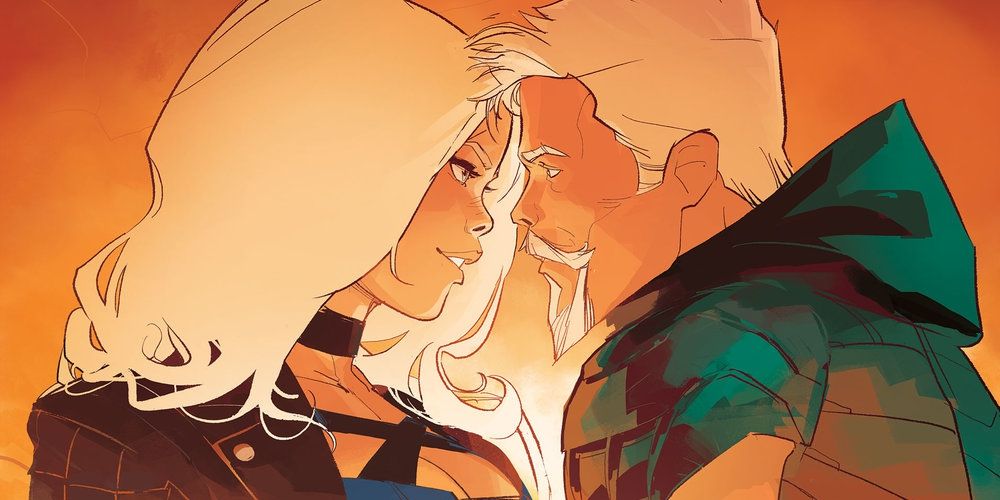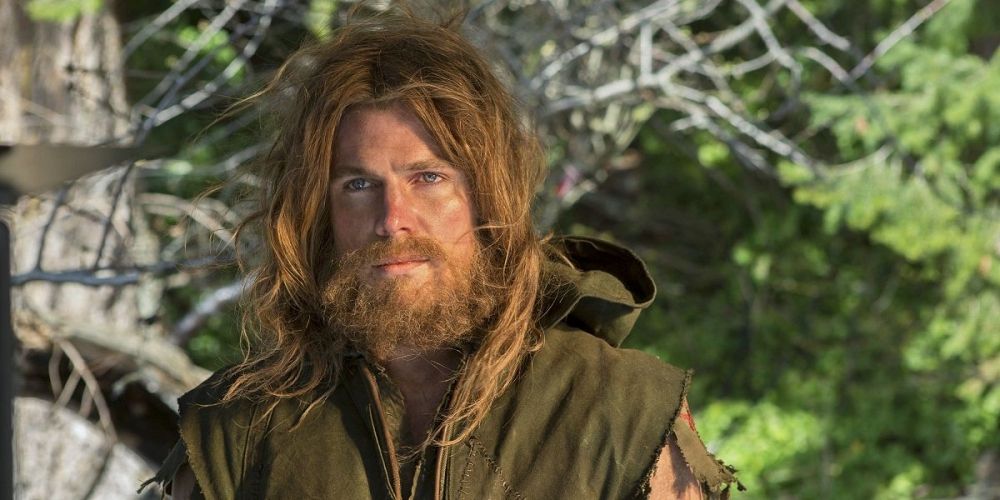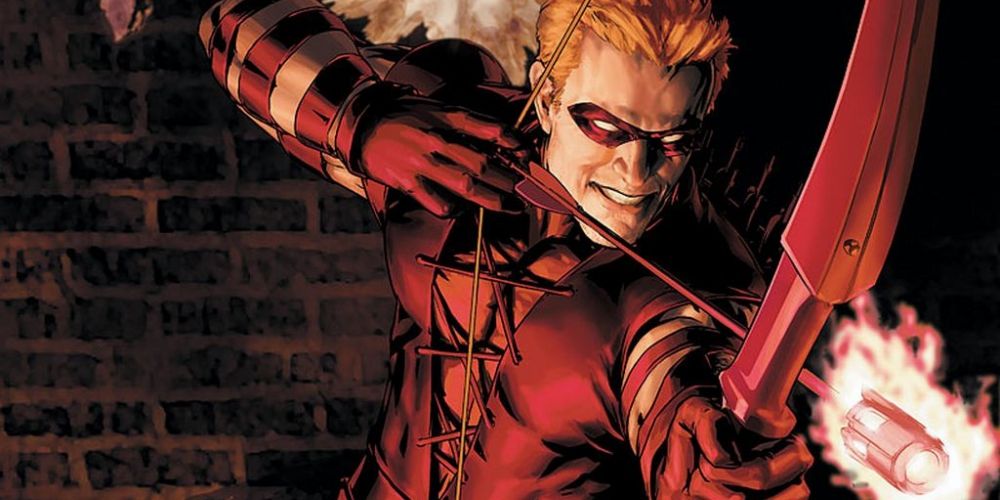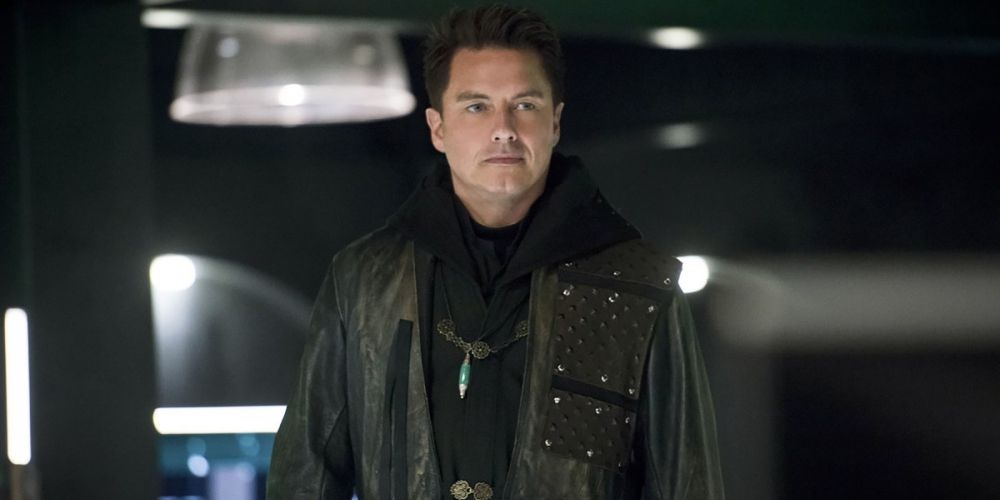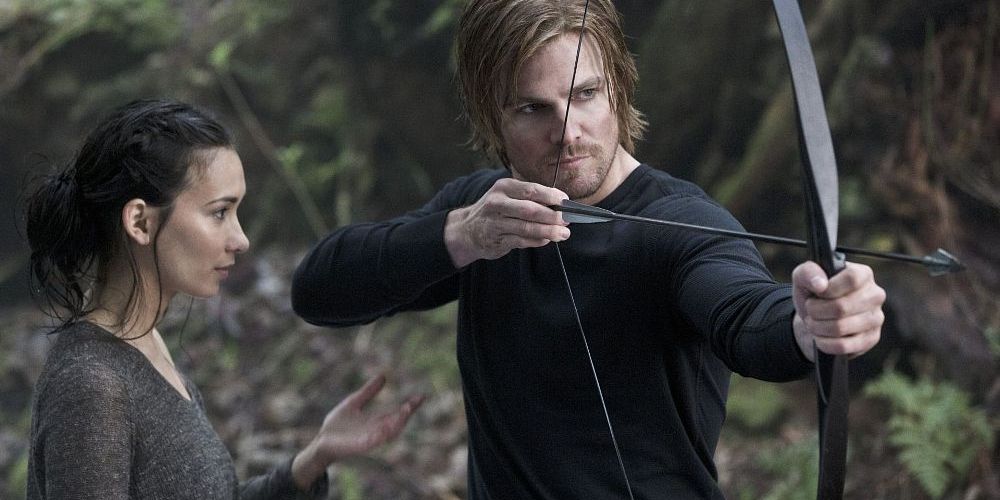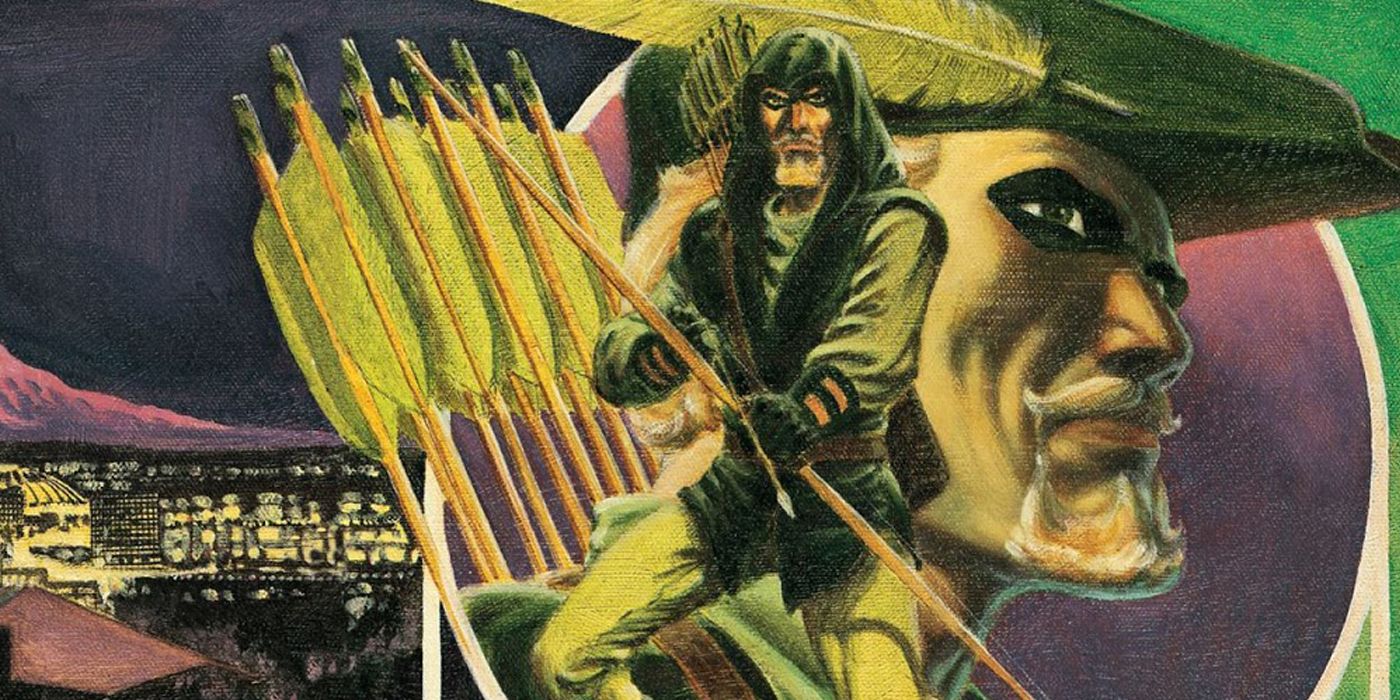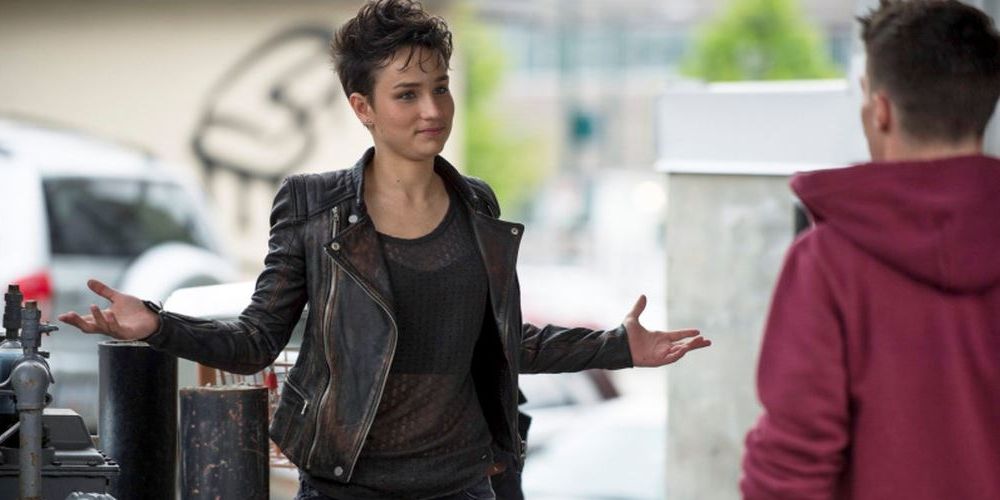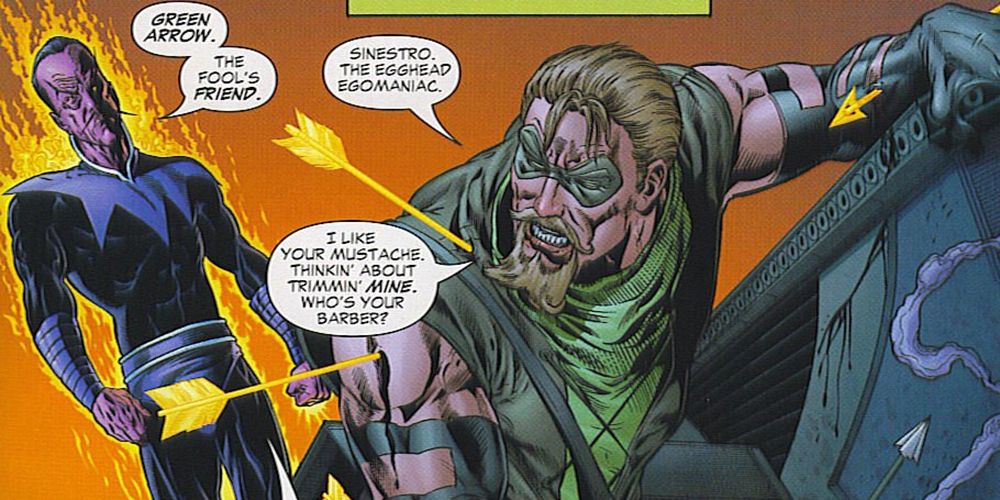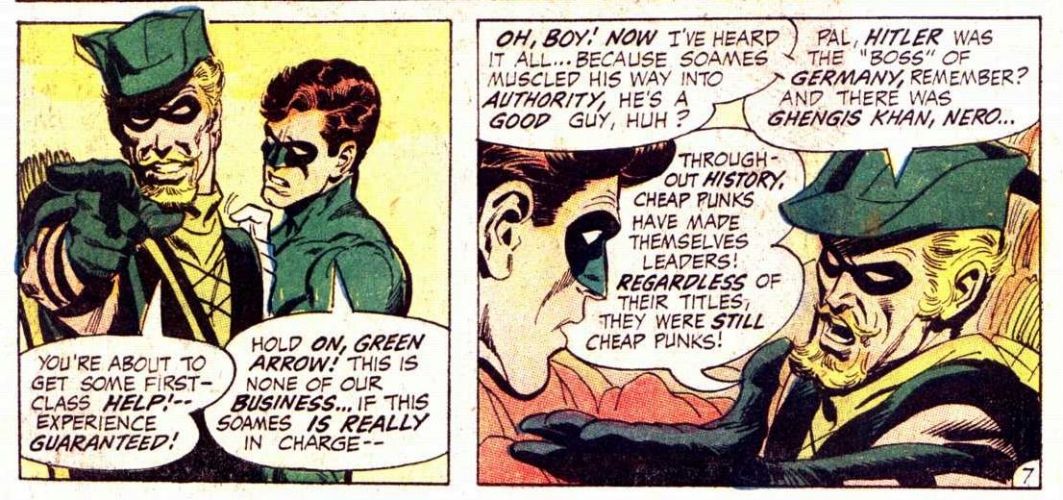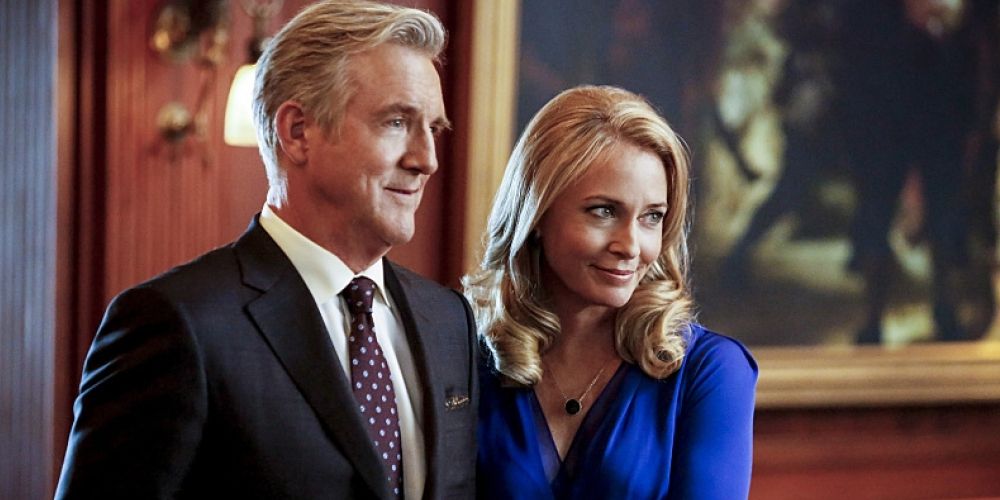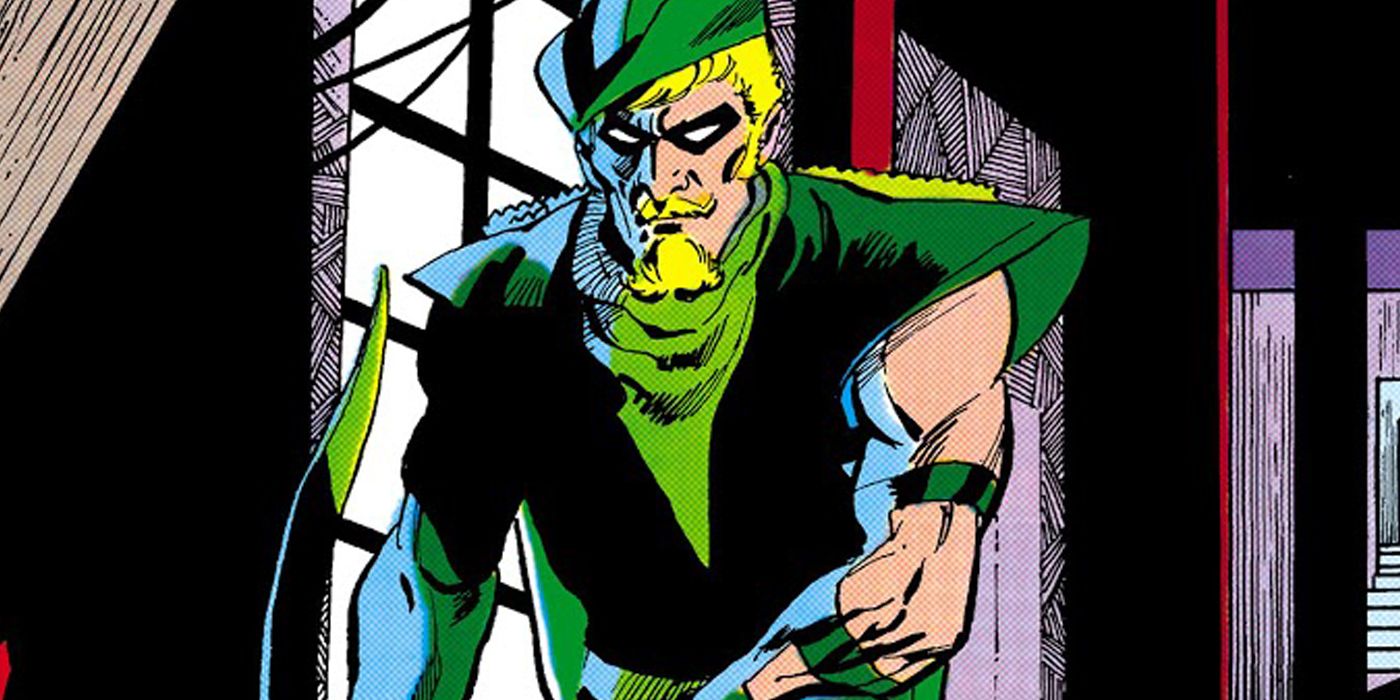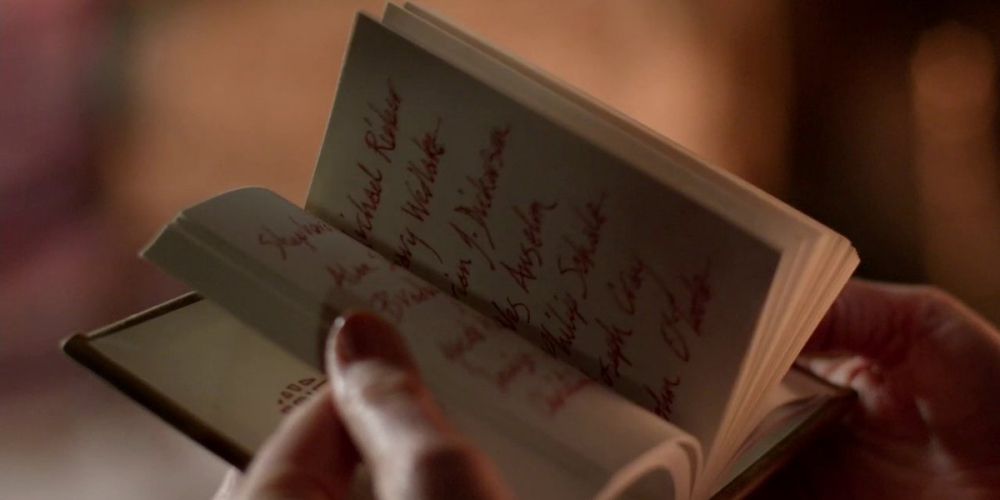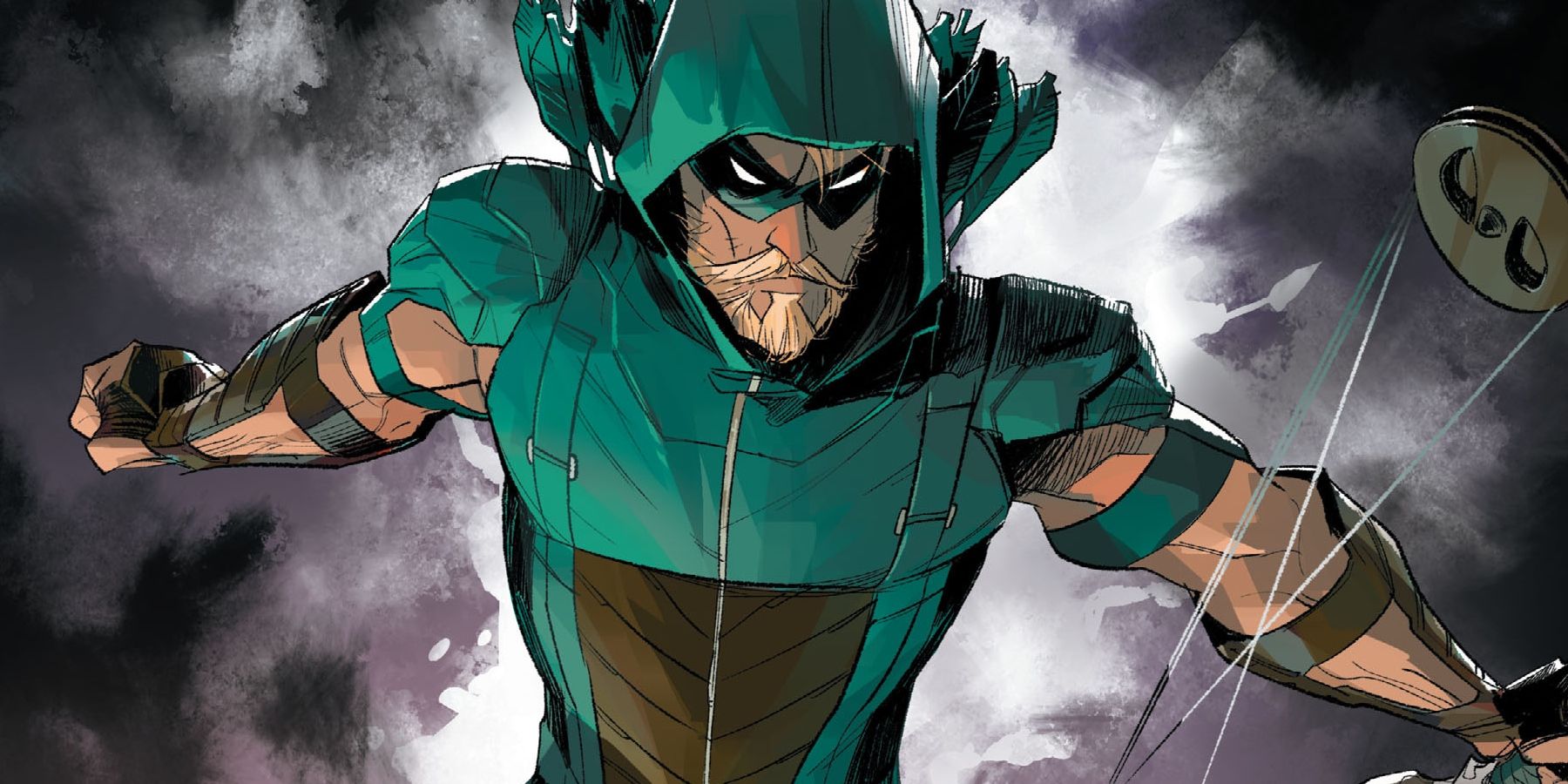Thanks to more than 75 years of history, Oliver Queen/Green Arrow is a character that continues to pervade popular culture. The telling of the hero’s story has been shaped by a myriad of writers, most utilizing established lore while simultaneously crafting for the character their own unique additions. Admittedly, Green Arrow’s rogues gallery isn’t particularly impressive, especially compared to that of Batman or The Flash; however, this does not negate the richness of the character’s mythos and development over time. If anything, a lack of top tier enemies at Green Arrow’s disposal is what elevates his pop culture status -- fans must gravitate towards him for reasons beyond the foes he is often pit against.
RELATED: 15 Embarrassing Roles Arrowverse Actors Want You To Forget
Regardless of why people take an interest, creators Greg Berlanti, Andrew Kreisberg, and Marc Guggenheim had a tall order to fill in developing a series around the Green Arrow when Arrow launched on The CW in 2012. As such, creative liberties were taken and a whole host of changes were made to the character and the lore surrounding him. Some changes were inarguably for the better, while others raise questions as to why they weren’t directly adapted from the source material. In the following list, we’re going to examine 15 of those alterations.
15 GREEN ARROW AND BLACK CANARY
The pairing of Green Arrow and Black Canary is as iconic as the characters themselves. For decades, these two have been one of DC’s "it couples." In the comics, and various other forms of media, their relationship is notoriously rocky. Yet, Oliver and Dinah are consummate soul mates that never fail to run back to one another. Several seasons of Arrow would pass before it became abundantly clear that the show would not explore the same endgame.
Arrow’s iteration of Dinah Lance is an old flame, the woman Oliver would forever love but never fully commit to. Season two of the series saw the famous romance briefly reflected with Sara Lance's Canary. Unfortunately, this pairing also fizzled out. It’s a shame; watching Sara and Ollie work together, in and out of costume, is the closest Arrow has gotten to portraying the beloved duo.
14 OLIVER'S STARFISH/LIAN YU STRANDING
Lian Yu may be an Arrow creation, but Oliver stranded on an island is as canon as it gets. In the comics, however, Oliver’s father is not present in the events leading up to the stranding. And the island, Starfish Island, is located in the Pacific Ocean. Additionally, Ollie learns to survive on his own -- an experience that grounds the selfish billionaire. Arrow turns the island into one whose location rests in the North China Sea, dubbing it Lian Yu (purgatory).
Of course, the show also expands Oliver’s time on the island, utilizing Lian Yu as a plot device for its function in Arrow’s five seasons of flashbacks, minus season three. As such, Lian Yu is synonymous with the show’s characterization of the hero in a manner that Starfish island never achieved elsewhere. Lian Yu, for this reason and others, is quite simply one of Arrow’s finer feats.
13 ROY HARPER'S ORIGINS
Disregarding his brief tenure as Arsenal, one of the more frustrating aspects of Roy Harper’s character on Arrow was the severe lack of focus on developing his backstory. Sure, he was a troublemaker with a sketchy past, but questions concerning why he was so tragedy-stricken never received an in-depth answer. This is especially unfortunate since he was a lead character. Furthermore, Roy’s origins in the source material offer a bevy of intriguing material in which a compelling backstory could have been molded.
Taken in by a tribe on an Indian reservation, in both post-Crisis and New 52 continuities, Roy Harper was raised without his biological parents. While on the reservation, he learned archery and got in more than his fair share of trouble. Could room have been made for a plot about the reservation? Unlikely. However, such details about his upbringing could’ve been worth exploring in other ways.
12 MALCOLM MERLYN
Setting aside the character’s reinterpretation in DC Rebirth, Malcolm Merlyn on Arrow and his counterpart in the comics share only basic traits. Arthur King, also known as Merlyn, is an assassin-for-hire and former member of the League of Assassins. He’s so skilled, he was once hired to kill the Batman, but an apt shot from Green Arrow thwarts the his attempt.
In Arrow, Merlyn isn’t driven by greed or crime. Instead, the character’s training as an assassin and his penchant for destruction comes out of a desire to avenge the death of his wife. After season one, he asserts his primary goal is to protect his daughter, Thea. Thus, though he’s still in the wrong, this version of the villain is more of a family man. This is one change from the Green Arrow mythos that’s been largely welcomed by fans.
11 PROMETHEUS' DEATH
Justice League: Cry for Justice is far more than a fascinating Justice League story. It’s Prometheus’ single best arc in the comics, as well as an incredible look into Green Arrow’s psyche as a killer. As fate would have it, Arrow successfully brought Prometheus to life in live action. Additionally, the series manages to analyze the titular hero’s murderous tendencies.
There are a multitude of differences between comic book Prometheus and his television counterpart. Origin story and abilities aside, his death is perhaps the most striking of modifications. Following the destruction of Star City at Prometheus’ command in Cry for Justice, Green Arrow tracks the villain’s whereabouts and kills him with an arrow to the head. It’s a decision that sets the Justice League after the hero in subsequent arcs; interestingly, it’s a decision Green Arrow chooses to avoid making on the show.
10 SHADO'S RELATIONSHIP TO OLIVER QUEEN
Arrow’s Shado is a mentor to Oliver Queen on Lian Yu. Their meeting is fortuitous, as the billionaire playboy is trapped on the island, while she is used as leverage by a mercenary to get help from her father, Yao Fei. In the show, Shado is a character that primarily appears in flashbacks, being murdered in Oliver’s second year on the island. Her role, while interesting to watch, pales in comparison to her relationship to Green Arrow in the source material.
The daughter of a Yakuza member, Shado’s story in pre-Crisis continuity is tragic. The same can be said of her post-Crisis existence, which includes origins similar to the previous iteration, her move from Green Arrow villain to ally, as well as her forcing Oliver to conceive a child. Changes made to Shado on Arrow may be for the best, but she was killed off far too quickly.
9 ROBIN HOOD INSPIRATION
As far as comics are concerned, Green Arrow’s look, courtesy of creator Mort Weisinger, is most notably inspired by Robin Hood and The Green Archer serial. However, in the show, though the Arrowverse itself loves its Robin Hood jokes, the vigilante’s appearance is thanks to an influence that is deeply personal to the character.
Yao Fei saves the future Emerald Archer from certain death, and teaches him to survive on an island whose namesake of purgatory nearly breaks him on a number of occasions. Because of this, Oliver dons Yao Fei’s garb in season one. For each subsequent season, the vigilante builds on the design of Yao Fei’s suit in a continued effort to honor his mentor’s memory. This particular alteration to the Green Arrow lore is deserving of applause.
8 SIN'S CHARACTER
Debuting during Gail Simone’s Birds of Prey run, Sin is introduced in the arc wherein Lady Shiva and Black Canary trade places. Sin fascinates because she’s a young girl intended to succeed Lady Shiva. However, after building a loving bond, the vigilante’s compelled to adopt Sin. Considering that she’d been groomed to act as Lady Shiva’s successor, Sin’s abilities in hand-to-hand combat are nothing short of amazing. Unfortunately, her exploration in Arrow scarcely resembles her comic counterpart.
In a Lian Yu flashback, Sara, Oliver and a few prisoners from Ivo’s ship find a helicopter crashed with its pilot still alive. As the others seek help, the pilot makes Sara promise to find his daughter, Sin. In present day, Sara and Sin have a sisterly bond. Yet following a quick scene in season three, she never returns. Strangely, Sara fails to raise concern for her whereabouts.
7 GREEN ARROW'S PERSONALITY
One of the Green Arrow’s more appealing traits is his keen sense of humor. Oliver Queen never misses an opportunity to get a laugh at another person’s expense, even if his jokes and witty comments don’t always win people over. This attitude is extended to combat situations, where sometimes making fun of an opponent is just as integral to the flow of a fight as landing a well placed blow.
The humor the character is so well known for has been depicted elsewhere in animated shows and movies, as well as NetherRealm’s Injustice series. Such behavior has yet to translate to The CW’s Arrow, though. But for the universe in which this iteration of the hero resides, his Batman-esque seriousness works exceptionally well, especially when teamed with the likes of The Flash or Supergirl.
6 GREEN ARROW'S RELATIONSHIP WITH THE FLASH
Typically, the bond between The Flash and Green Arrow is a friendly and playful one. The two are peers of equal measure for the most part, and compliment each other well whenever paired. To an extent, this is somewhat reflected in the Arrowverse with Grant Gustin’s Flash and Stephen Amell’s Green Arrow; although, their relationship is more in line with that of a student-teacher bond.
Because Green Arrow is essentially the Arrowverse’s Batman, as far as the onscreen narrative is concerned, his acting as Barry Allen’s mentor could not be better depicted. This particular dynamic is fun to watch, allowing the seasoned vigilante to pass on knowledge that audiences have seen the Scarlet Speedster impress upon Melissa Benoist’s Supergirl. It stands to reason the Green Arrow’s mentoring days won’t come to a halt anytime soon.
5 SOCIOPOLITICAL ISSUES
Sociopolitical issues and Green Arrow may not seem like perfect pairings at the outset, but the character is known to be an activist on a variety of social issues. In the past, Green Arrow has addressed drugs, most notably because of Speedy; in addition, the character has also tackled racism and the Manson family. Recently, Green Arrow books have delved into the United States’ current state of affairs with topics influenced by Ferguson.
Arrow has largely steered clear of such matters, excepting arcs about gun control or drug abuse which were cursory subplots that didn’t allow Oliver to deeply delve into his stance on the subjects. Apparently, though, the show may have a Black Lives Matter-centric episode in its sixth season. Based on Arrow’s track record, many are understandably concerned about how well the sensitive subject is incorporated.
4 OLIVER QUEEN'S ORIGIN STORY
DC’s post-Crisis continuity doesn’t offer the incredible depth into the Queen family that the show would provide decades after Crisis on Infinite Earths. Both of Oliver’s parents died when he was younger, leaving him with a fortune and in the care of an uncle. Years of effortlessly playing the part of a selfish party boy culminated in his being pushed overboard while on a boat and stranded at sea. After washing ashore on Starfish Island, Ollie is forced to develop survivor skills. In doing so, he later dismantles a drug smuggling operation on the island, leading to his discovery of his true purpose as a crimefighter.
Arrow takes the archer’s backstory in a far darker direction, as he watches his father kill himself aboard a lifeboat and later learns of his mother’s involvement in their shipwreck. These changes arguably make Green Arrow all the more intriguing.
3 GREEN ARROW'S COSTUME
It’s hard to look at comic book Green Arrow and not immediately envision Robin Hood; the Emerald Archer was obviously designed with the latter in mind. In the late '60s, DC’s bow-wielding vigilante began donning a Van Dyke beard, and it quickly became a staple of the character’s design. Arrow, however, moved away from both key aspects of the character, instead adopting a modern interpretation that’s easy on the eyes and pays homage to the hero’s lengthy past.
These changes have effectively removed some of the camp often associated with Green Arrow. Along with the attitude adjustment and backstory modifications, the new look aids in the character’s ability to be taken seriously by folks in Arrow’s Star City and the real world. The showrunners and cast often tease the idea of showcasing Green Arrow’s classic appearance, but perhaps some things are better left as they presently stand.
2 OLIVER'S PURPOSE FOR BECOMING A VIGILANTE
While on Starfish Island, Oliver Queen is moved by the injustice he realizes he’s ignored all of his life. In altering the character’s origins, the brain trust behind Arrow also elected to rewrite the hero’s reasoning for adopting the role of Starling City’s vigilante. Here, Oliver’s purpose is admirable, effectively expanding the Queen family’s complex history and building upon the vigilante’s character development.
In Arrow, Oliver is given a list by his father after their boat sinks. The list identifies the people who have wronged Starling City for greed and personal gain. It's this list that catapults Oliver into his tenure as a crimefighter, and its effects on his life still linger into the show’s fifth season. Modifications of this nature make Green Arrow and Oliver Queen richer, as the two personas have been explored as separate entities over the last several seasons.
1 OLIVER QUEEN'S OPTIMISM
Green Arrow’s optimism is typically unrivaled. Perhaps it’s a vestige from the life he led before taking on the role of a bow-wielding, pun-spouting crimefighter. Optimism goes hand-in-hand with one’s personality, sure, but witty rejoinders and levity do not beget a person’s ability to hope for the best. Arrow’s Oliver Queen rarely seems to harbor hope, and readily prepares for any situation’s worst possible outcome.
With The CW’s interpretation of the hero in mind, such behavior is expected. However, in some seasons, particularly seasons three through five, Oliver’s lack of a cheerful disposition is a heavily focused aspect of his characterization. How many times was the word “dark” used to describe his outlook in season three? How often does he actively blame himself for circumstances beyond his control? Again, it makes sense contextually, yet sometimes a display of positivity goes a long way.
Do you like the changes Arrow has been made to Green Arrow? Share your thoughts in the comments below!

